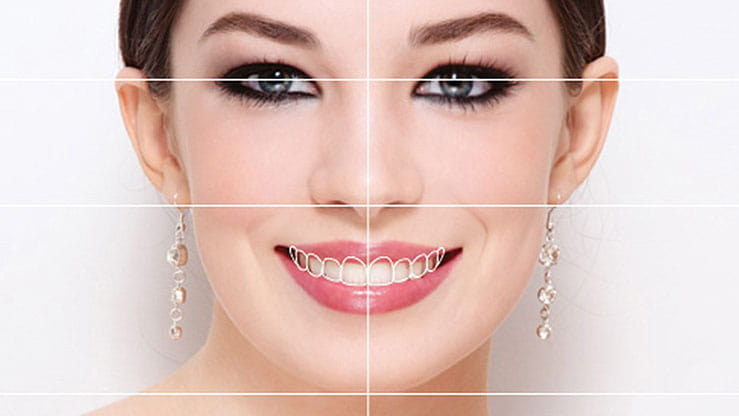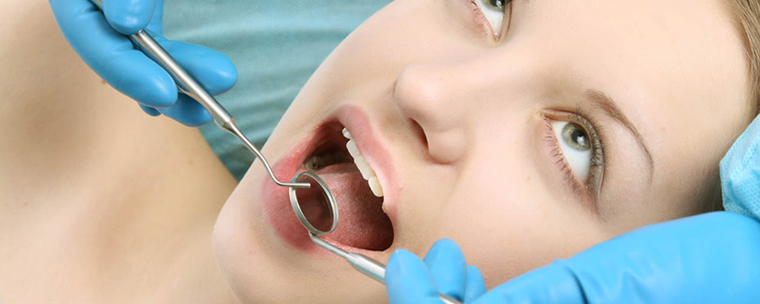Smile Design Turkey
Smile design Turkey is to plan and create the ideal smile for you by combining some of your personal wishes with health, naturalness and function.
The important thing here is, at first glance, it seems to have been newly built, very large, very white, splint etc. They are not teeth, on the contrary, they are teeth that are integrated into the face of the person that cannot be immediately noticed by other people. An unsuccessful case is immediately recognized, the first area that sees the eye is the teeth.
Your smile says a lot about you. According to research, the first place people look at when they meet is usually your smile.
In a dissonant smile, your eyes immediately focus on the person’s teeth, subconsciously you try to find the reason for the inappropriateness of that person’s smile. We all do this is part of our social nature. In a harmonious smile, your brain records that the person has a nice smile and we direct attention to their eyes. Nothing expresses personality, energy and confidence more than a healthy and radiant smile.
In short, your smile is your self-confidence.
If you say yes to one or more of the questions below, you also need an aesthetic dentistry application.
• Did you want to have someone else’s smile?
• Do you ever try not to show your teeth or cover your mouth with your hand while laughing?
• Do you avoid smiling while taking a picture?
• Is there anything in your smile that bothers you?
• When you smile with your mouth wide open, does your upper lip go up to show your gums too much?
• Do you think that the treatments (fillings, crowns, etc.) made on your teeth are different from your natural teeth (color, form, etc.)?
• Would you like your teeth to be whiter?
• Are there any crowding and / or irregularities in your teeth?
• Are there gaps between your teeth?
• Do you have many fillings or fractures in your anterior teeth?
• Are there uncomfortable differences in level and size between your front teeth?
How is smile design done?
A physician who has concentrated on aesthetic dentistry should first make the following evaluations before applying to his patient;
- Factors That Affect Your Smile
- Face Analysis
- Face Proportions
Vertical and horizontal lines that are imagined to pass through the face of the person give mathematical values used in both symmetry and dimension calculations. Although it is not always possible to fully comply with these values, this is one of the references used in the initial phase.
Smile Design Turkey : Age
Today, many products and applications make us look younger. (Anti-wrinkle creams, cosmetic materials, skin tightening operations, etc.) Rejuvenating the smile is one of the most effective of these applications.
If we look carefully at our smile, you will see that our teeth are darker than your youth and lose their shine. Cigarettes, tea, coffee, red wine that you have used for many years and sometimes the erosion of the enamel layer of the tooth causes your smile to become discolored and pale over the years. If this is just the problem, you can create impressive changes with a simple whitening process. But most of the time, simply whitening your teeth is not enough. Your smile can be completely optimized with composite bonding, porcelain veneers and crowns. This change is enough that people around you may only notice a positive change in you. They think that you have changed your hair and lost weight, but they cannot notice the big change in teeth. Because the treatments should not only be beautiful, but also completely compatible with your face.
Our smile shrinks as we get older. Our upper lip collapses with the effect of gravity, and the vermillion border (inside of the lip) becomes thinner. Our teeth wear out over the years. The distance from the nose to the tip of the chin approaches each other. So the lower 1/3 of the face becomes shorter. Soft tissues in the lower 1/3 of the face are supported by jaw bones and teeth. The height that occurs when we close our teeth (especially the back teeth) is very important for this support. Over the years, our jawbones become thinner, our teeth wear out and this distance becomes shorter. This not only causes you not to chew well enough anymore, but also causes the soft tissues that determine your smile to sag and not be supported enough. The wear on the teeth becomes evident over the age of 40 and is very common. Also, if there is a problem of clenching and grinding, the teeth shorten rapidly and often break. Teeth start to look bad, unable to fulfill their functions, and additionally, problems occur in the jaw joint, and all of these make the person look older.
Teeth appear 1 mm less approximately every 8-10 years, so by the age of 70, there are almost no visible teeth when immobile. Every 10 years, there is an image loss of 15-20% in a person’s smile.
Gender
There are important differences between male and female smiles. Some of these are those
Face shape
In natural teeth, there is a similarity between the shape of the face and the shape of the teeth. In other words, if you have an oval face, the form of your teeth is very close to oval or ovale. We can catch natural smiles by using this harmony in the aesthetic applications we make.
Sometimes we disrupt this harmony and use cosmetic illusions. The person’s face can be square, round, or long enough to bother him. In such people, the discomfort in the shape of the face can be reduced with the new smile by taking this discomfort into consideration while designing the smile, by changing the shape of the teeth.
For example, if a person with a long face shape is made with thin long teeth, his face will look taller than he is. In this case, the length of the face can be hidden by using wider square teeth, or thin long teeth applied to a patient with a very round, fat face will make a positive difference in the overall appearance of the face.
Skin color
In aesthetic dentistry applications, it is very important that the designed smile exactly matches the person. Because even beautifully prepared teeth sometimes cannot add anything to the face, on the contrary, it disturbs the eye. Skin color is also one of the most important factors in determining the color of the application to be made. While very light, bright, striking teeth cannot provide a harmonious and beautiful smile in people with a dark skin color, these teeth look more natural and the harmony of the smile is provided in people with lighter skin color.
Smile Design Turkey : Dental Analysis
Dental conditions and problems such as tooth components, tooth length, tooth color, form, midline should be determined. When using the filter as a reference, it has been statistically shown that the maxillary midline coincides with the midline of the face in 70% of the cases. As long as it is perpendicular to the interpapillary line, midline shifts up to 4 mm are not noticeable.
Applications in aesthetic dentistry vary according to the problems in the form and color of the teeth.
If there are spaces between teeth (diastema): Diastema can be treated in 3 ways;
Orthodontic treatment
2.Treatment with composite fillings
3. Treatment with laminate veneer application.
If the color of the teeth is bad: (Tetracycline, Fluorosis staining)
The process to be done depends on the level of badness of the color. The first thing to try is whitening. If the desired color cannot be achieved (in some cases the teeth do not react well to bleach or the color is too dark, sufficient whitening cannot be achieved) one of the treatments to be done is porcelain laminate veneers. In cases with advanced tetracycline coloration, the procedure may be first bleaching and then laminate veneer. The color of the adhesion cements of the laminate veneers also affects the light and color reflected by the lamina.
If teeth are crowded:
Orthodontic treatment should be done first. If the patient does not want orthodontic treatment at all or if orthodontic treatment is not suitable for the patient for various reasons, the chaos can be eliminated in some cases with laminate veneer application.
If there are abrasions on the front teeth and fractures on the ends:
One of the most aesthetic and long-term solutions to get rid of them is porcelain laminate veneers. Both your teeth will be protected against external factors and you will have a beautiful smile. If the fractures in your teeth are caused by clenching or grinding problems, after laminates are made, protective plates called night guard should be made.
If there are many colorless fillings in the front teeth:
The cheapest and easiest treatment that can be done is to renew composite fillings. However, there are limitations due to the nature of the material. So, even if a good filling is made, if you smoke too much coffee, tea, or if your oral hygiene is not good, the fillers will absorb the colors in a couple of years and the problem of edge leakage will occur. In such cases, porcelain laminates may be preferred.
Fonatic Analysis
The dentist does your phonatic analysis by asking you to make sounds such as i, EM, S. The problems that may arise in this analysis are sometimes caused by the tooth positions. Treatment can be performed by correcting these positions.
Gum Analysis
Ideal gum
• Light pink color, healthy and elastic,
• Not in a very thin biotype,
• Symmetrical, visible on the laughing line as necessary,
• Zenith points located in the right place,
• The gingiva is ideal, with no or minimal loss of papillae.
Even the most beautiful teeth cannot look attractive if they are not framed by healthy and properly shaped gums. Non-aesthetic gums can be corrected with treatments and small operations on your gums.
Unhealthy gums: Due to periodontal disease, gums appear red, swollen and shiny. They must be treated before aesthetic dentistry procedures.
Gingival recession: As a result of gingival recession, some teeth may appear too long, the root surfaces are exposed. In this case, gingival treatment can be performed first and these openings can be closed with soft tissue grafts.
Irregular gingival edges: The gums that frame the teeth may be too high or too low in some teeth (gingival recession, eruption disorder, defects arising from tooth loss, etc.) Before aesthetic procedures, gingival shapes should be idealized.
Gingival pigmentation: As a result of any injury or naturally, there may be different colored areas on the gums. If it is in the laughing line, eliminating them also has a positive effect on aesthetics.



